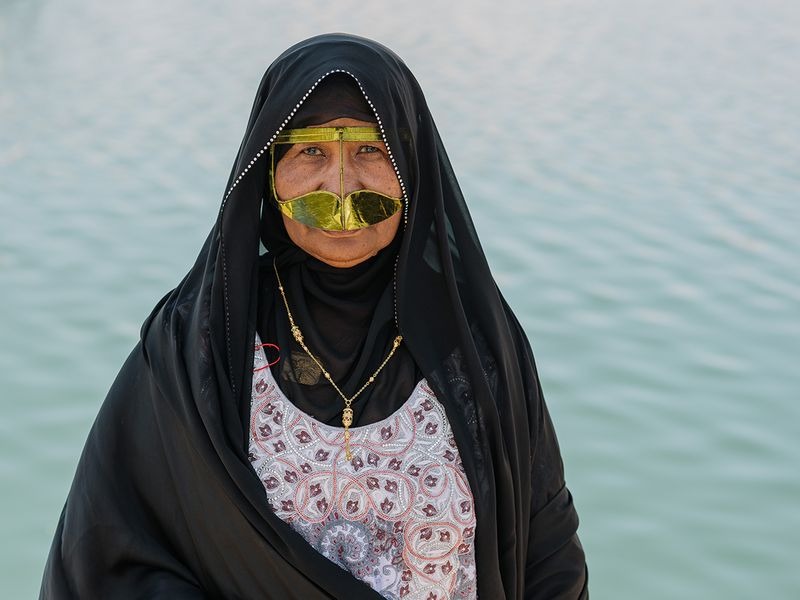The traditional craft of talli, originating from the ancient Silk Route, has become an integral part of the UAE’s cultural heritage. Emirati women have adorned their clothing with fashionable braided lace made from cotton, silk, gold, and silver strips for centuries. Beyond being a fashion statement, talli holds significant value as it allows women to wear their wealth and even melt down the precious metals for sale when needed. Today, passionate artisans like Fatima Ali Al Naqbi preserve this craft, keeping the tradition alive with the support of initiatives like the Irthi Contemporary Crafts Council.Talli: A Time-Honored Craft:Talli is a traditional craft passed down from mothers to daughters, encompassing both the technique and the metal strips used in its creation. The craft involves two formats: flattened silver or gold strips pierced through fabric to create symbols like stars, forming head veils, and braided cords of different designs stitched to the neckline and cuffs of garments.Multicultural Origins:While talli is not unique to the UAE, it has been practiced in various cultures, from China to Europe. Different regions developed the craft in their own ways, influenced by Ottoman, Iranian, and Mughal courts. The term “talli” is believed to have originated from the Arabic word “tal’a,” meaning to coat something, or the Sanskrit word “tola,” a unit of weight used to measure metals in India.The Connection to India:The craft of talli has strong links to India, and historically, the silver- or gold-coated strips used in talli often came from Gujarat. Merchants brought talli to the UAE as they traded with the Indian Subcontinent, making it an integral part of the country’s cultural heritage.The Craft in Modern Times:Today, talli looks different due to the high cost of silver strips. Instead, colorful tinsel strips from Japan are used, giving talli a vibrant and lighter appearance. However, passionate artisans like Fatima Ali Al Naqbi continue to create traditional talli patterns, maintaining the essence of the craft.Talli Making and Its Significance:Talli making sessions can be communal gatherings where women work on talli together for pleasure or as a source of income. The craft allowed women to express their creativity, compete with each other, and wear their wealth, as the silver strips could be melted and sold when needed.Threads and Patterns:Traditionally, women used silver strips combined with pure white cotton threads. As colors became available, they started using green, red, and black threads. Each design requires specific sets of cotton and silver strip spools, and the complexity of the design determines the number of spools used.Time and Dedication:Creating one meter of talli takes dedication and time. Skilled artisans like Fatima Al Naqbi can produce one meter in a day, and the longest talli she made was 50 meters, taking two months to complete.Talli’s Significance Today:While talli is used less in modern times due to changing fashion trends, it still holds cultural importance and is incorporated into contemporary designs by young UAE designers. Initiatives like Irthi Contemporary Crafts Council aim to sustain traditional crafts like talli and encourage their application in daily clothing.Conclusion:Talli, the ancient craft that became an integral part of the UAE’s cultural fabric, remains a symbol of creativity, empowerment, and heritage. Thanks to dedicated artisans like Fatima Ali Al Naqbi and the efforts of organizations like Irthi Contemporary Crafts Council, talli continues to thrive, keeping the rich tradition alive for future generations to cherish. As this cherished heritage is passed on, it reinforces the essence of community, creativity, and the timeless artistry of talli.
Talli: The Artistic Heritage Woven with Passion and History










